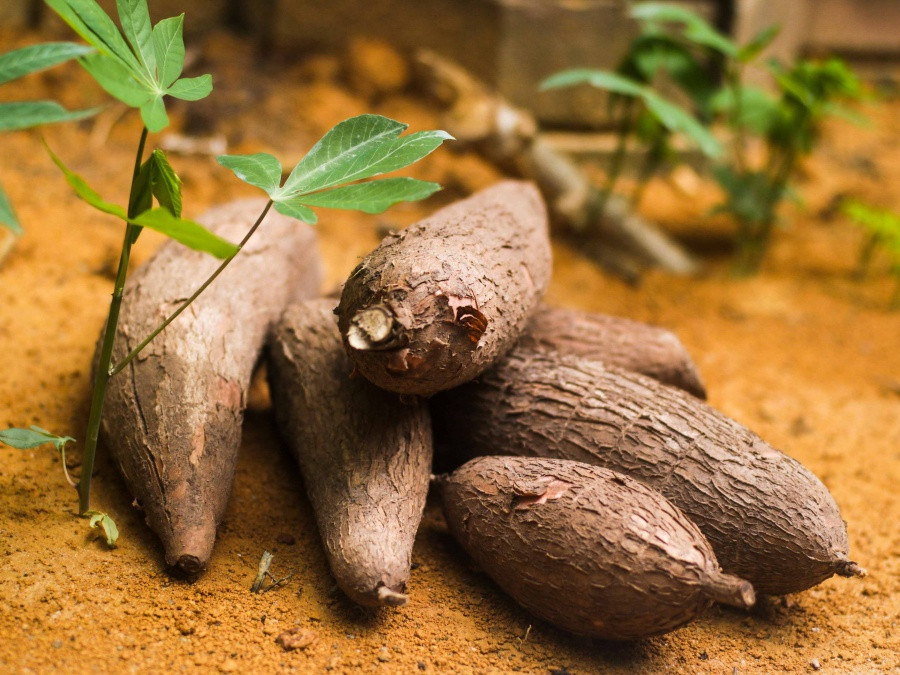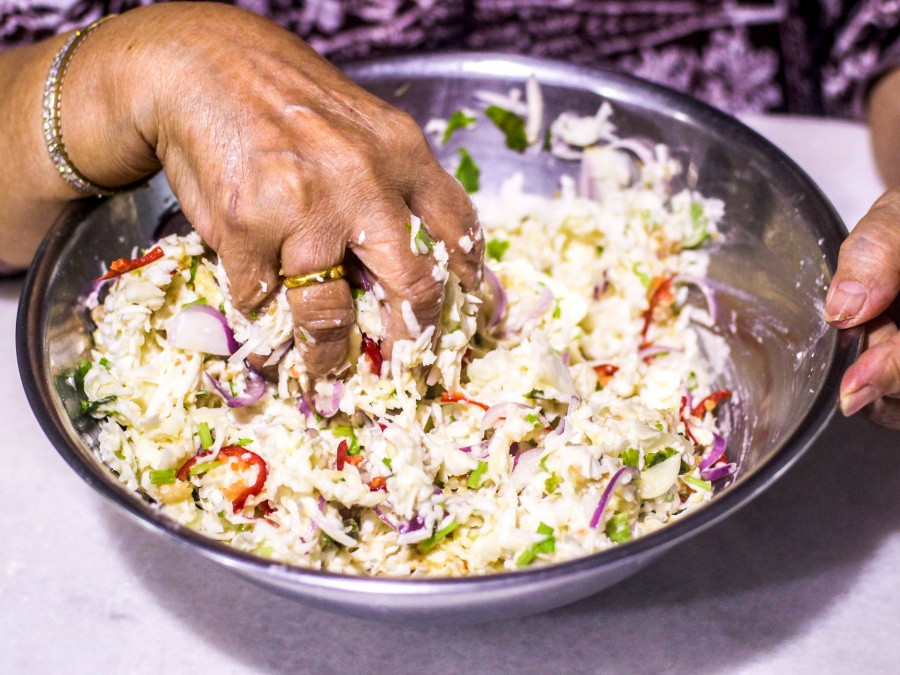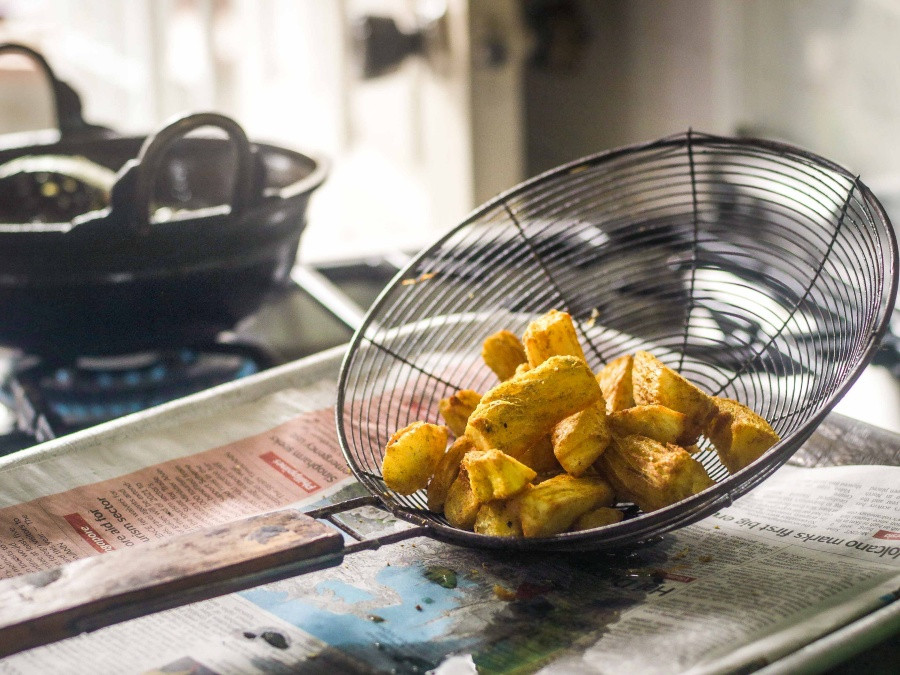The value of tapioca through the eras
by Aziff Azuddin21 May 2021
The ubiquity of tapioca made it a Malayan staple during the Japanese Occupation. One writer tries to understand its complicated past and present through his grandmother’s cooking.
Growing up, every Sunday was a rhythm. I would wake up a little after dawn, just in time to see the sun rise. I would walk downstairs and hear my grandmother and mother scurrying in the kitchen, accompanied by the hiss of something frying in the wok. Sunday breakfasts were a feast. It was the only day of the week where the entire household was allowed to wake up as late as we wanted, and breakfast would blend into lunchtime. My grandmother, the family matriarch, would be instructing my mother in a catalogue of recipes that she had memorised over the decades.
The one breakfast meal that has stayed with me throughout the years is steamed ubi kayu, or tapioca, served with sambal ikan bilis. Simple fare. But often the simplest meals are the ones that require years of mastery, and decades of minute experimentation. The tapioca holds a sentimental place in my childhood because of the significance it had in my grandmother’s.
“I was only three or four years old when the Japanese occupied Malaya,” my grandmother, Fatimah Alwee, told me. “A lot of what I know about that time came from what I heard from my family.” My grandmother is now 78 years old, and despite having no immediate memory of the occupation, she registered the impact of these traumatic years in the way she ate.
“For breakfast, we would have jemput-jemput ubi kayu or ubi rebus. In the evenings, we would make ubi getas,” she said, describing the daily consumption of tapioca. What about rice? I asked. “Rice was something we had for lunch and dinner.” Rice, my grandmother clarified, remained a staple but tapioca quickly grew in importance as access to food became scarce.
During the Japanese occupation in 1941 to 1945, rice was rationed. Even years after the occupation ended, rice was only available for the rich. Rice production requires paddy fields, a land resource that was controlled by the government of the day and one not so easily cultivated.
Tapioca, however, was for the masses. It was easy to grow anywhere and required no maintenance, making it naturally suited for times of hardship and scarcity. Those days, it was not unusual to find tapioca growing in abundance in the jungles surrounding rural villages.
My grandmother, a Johorean of Muar origin, explained that her family planted tapioca shoots by the dozens near the ditch behind their home, alongside other vegetables, and varieties of ulam.
“There were no pesticides back then. Food was definitely a lot healthier,” she said. “Nowadays, you order pucuk ubi online. Back then, all I had to do was go find ubi kayu in the semak next door.”
This proliferation of tapioca gave rise to all kinds of different recipes, and variations in those same recipes from cook to cook. For example, when dissecting her own fried tapioca recipe, my grandmother confesses that she does not boil the starch beforehand. She carried this practice into her married life, and only years later, while having tea with a friend, did she learn the tip of boiling tapioca before frying for better texture. My grandmother, however, still doesn’t boil hers out of habit. My mother, on the other hand, swears by it.
Then there was the jemput-jemput ubi kayu, which came with its own complex list of ingredients such as shallots, Chinese celery, garlic, chillies and dried shrimp. Surely you did not have all these ingredients then, I asked, when my grandmother presented me with a bowl of said ingredients. We instinctively associate wartime and occupation with scarcity (hence the reliance on tapioca in the first place). But not everything was in short supply. “In Muar, we made jemput-jemput with dried shrimp,” my grandmother explained. “It would be taken out of the sea, and then dried in front of the Chinese shops on large mats.”
My grandmother elaborated on how the majority of the Muar-Chinese community were fishermen. “They could catch fish and turn it into so many things!” Salted fish, jeruk ikan, dried anchovies—just some forms of preservation practiced before a time of mass domestic refrigeration.
This resourcefulness in a time of hardship is the sentiment that elevated tapioca into a symbol of Malayan hardship during the Japanese Occupation. Many from my grandmother’s generation now understandably dislike tapioca with a passion. To them, it’s a reminder of a traumatic time in their lives and the collective Malayan memory. They associate it with years of oppression, anxiety, and poverty. With the abundance of food choices these days—air-flown or cargo-shipped from far away—why would tapioca be at all enticing?
This sentiment is not lost on my grandmother. There is an acknowledgement that because she was young during the Japanese Occupation, she did not experience much of the horror that happened in the 1940s. However, she had an insight into the fraught relationship others of her generation have with the root vegetable through her late eldest sister, Mahnom. Her late sister disliked tapioca vehemently. My grandmother said her sister was “muak” and “bosan” with tapioca because that was all the family ate from dawn to dusk.
Its association with wartime lends tapioca some darker associations, darker even than hunger and deprivation. “My mother used to rub my sister with kitchen ash to make her unattractive [to the Japanese soldiers],” my grandmother said. Her sister had memories of being held at gunpoint, or times when my grandmother and her siblings would be hurried to hide in the kolong underneath the house every time Japanese soldiers came around. Thanks to her youth at the time, these were traumatic memories that my grandmother escaped, but were experienced and still remembered viscerally by those older than her. It is unsurprising then that by association, tapioca holds a grim sentiment in Malayan history.
As my grandmother enters her sunset years, she has been reflecting on what she eats and why. My grandmother’s culinary history is rich, but tapioca holds a special place in her heart. It reminds her of the first few things she learned to cook. Despite its associations with a time of hunger and hardship, tapioca reminds her of a younger, simpler time unburdened by the passages of adulthood and modernity. Every time she talks about tapioca, she expresses nothing but attachment to the root vegetable—seeing it as one of the many bridges of memories she has to her family members who have long passed. Love and old memories can be bittersweet—just like tapioca that is boiled and eaten on its own.
See Aziff’s family’s tapioca fritters recipe, and the deep-fried tapioca recipe.
***
Based in KL, Aziff Azuddin is a researcher and journalist constantly exploring the complex socio-cultural contours of Malaysian life.
Read next
How a Japanese technique influenced Malaysian bakeries
The era of soft buns

How did tinned sardines become a staple in Malaysian kitchens?
A history of canned fish in Malaysia

There’s a T-Rex in the living room
A daughter yearns for her mother







